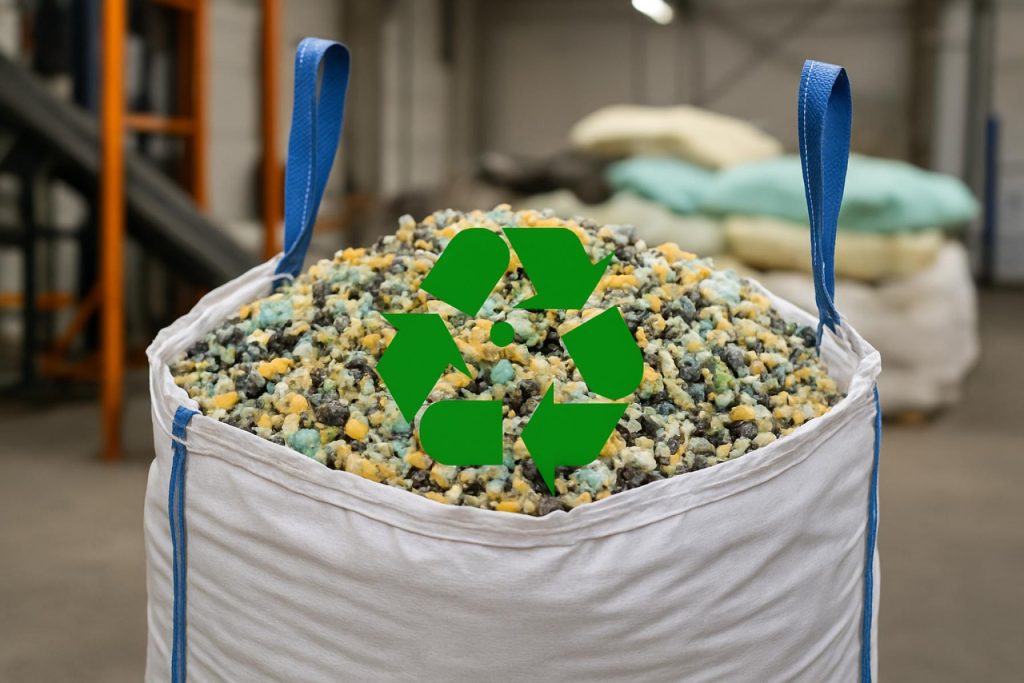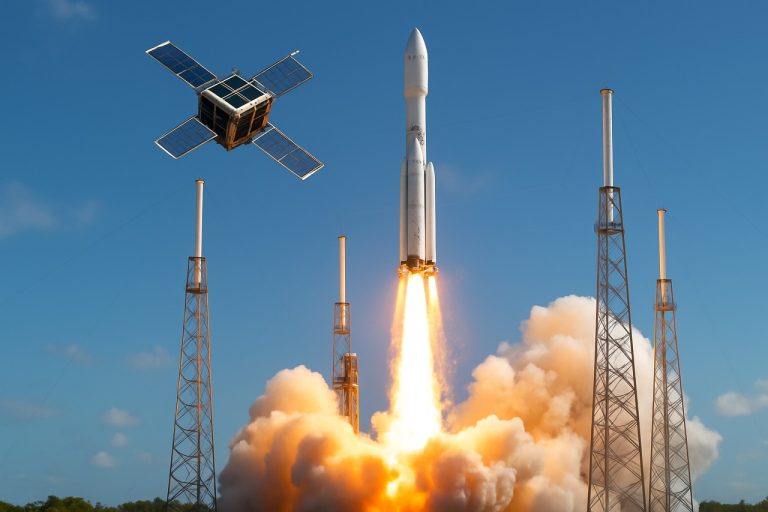
Polyurethane Recycling Technologies Market Report 2025: In-Depth Analysis of Innovations, Market Dynamics, and Global Growth Prospects. Explore Key Trends, Forecasts, and Strategic Opportunities Shaping the Industry.
- Executive Summary & Market Overview
- Key Technology Trends in Polyurethane Recycling
- Competitive Landscape and Leading Players
- Market Growth Forecasts (2025–2030): CAGR, Volume, and Value Analysis
- Regional Market Analysis: North America, Europe, Asia-Pacific, and Rest of World
- Future Outlook: Emerging Applications and Investment Opportunities
- Challenges, Risks, and Strategic Opportunities in Polyurethane Recycling
- Sources & References
Executive Summary & Market Overview
Polyurethane (PU) recycling technologies are gaining significant momentum in 2025, driven by mounting environmental concerns, regulatory pressures, and the global push toward circular economy models. Polyurethanes, widely used in industries such as automotive, construction, furniture, and appliances, present unique recycling challenges due to their thermoset nature and complex formulations. However, advancements in both mechanical and chemical recycling methods are reshaping the market landscape.
The global polyurethane recycling market is projected to reach new heights, with estimates suggesting a compound annual growth rate (CAGR) of over 6% from 2023 to 2028, fueled by increasing demand for sustainable materials and stricter waste management regulations in regions such as the European Union and North America (MarketsandMarkets). The European Green Deal and the U.S. Environmental Protection Agency’s initiatives are particularly influential, encouraging investment in advanced recycling infrastructure and innovation (European Commission; U.S. Environmental Protection Agency).
- Mechanical Recycling: This method, including rebonding and grinding, remains the most established, especially for flexible PU foams used in mattresses and furniture. However, it is limited by quality degradation and end-use applications.
- Chemical Recycling: Technologies such as glycolysis, hydrolysis, and aminolysis are rapidly advancing, enabling the breakdown of PU into its original polyols and isocyanates. Companies like Covestro and BASF are pioneering scalable chemical recycling plants, aiming to close the loop for rigid and flexible PU waste streams.
- Emerging Technologies: Novel approaches, including enzymatic and catalytic depolymerization, are under development, with pilot projects demonstrating promising results for hard-to-recycle PU types (PlasticsEurope).
Despite these advancements, challenges remain, including economic viability, collection logistics, and the need for standardized quality in recycled outputs. Nevertheless, the market outlook for 2025 is optimistic, with increased collaboration between manufacturers, recyclers, and policymakers accelerating the adoption of innovative PU recycling solutions and supporting the transition to a more sustainable materials economy.
Key Technology Trends in Polyurethane Recycling
Polyurethane (PU) recycling technologies are rapidly evolving in response to mounting environmental pressures and regulatory demands. As of 2025, the industry is witnessing a shift from traditional mechanical recycling methods toward more advanced chemical and thermochemical processes, aiming to address the complexity and diversity of PU waste streams.
Mechanical Recycling: This conventional approach involves grinding PU waste into granules for use as fillers or in bonded products. While cost-effective, mechanical recycling is limited by the degradation of material properties and is primarily suitable for relatively clean, homogeneous PU waste. Its market share is gradually declining as more efficient and versatile technologies emerge.
Chemical Recycling: Chemical recycling, particularly glycolysis, hydrolysis, and aminolysis, is gaining traction for its ability to break down PU polymers into their constituent monomers or oligomers. Glycolysis, the most commercially advanced, uses glycols to depolymerize PU foams, producing polyols that can be reused in new PU production. Companies such as Covestro and BASF have scaled up pilot plants and are moving toward industrial-scale operations, with Covestro’s “Evocycle® CQ” process being a notable example. Hydrolysis and aminolysis are also under development, offering potential for higher purity outputs but facing challenges in process optimization and scalability.
- Hydrolysis: Utilizes water and catalysts to break down PU, suitable for both flexible and rigid foams.
- Aminolysis: Employs amines to depolymerize PU, yielding polyols and amine derivatives, with ongoing research to improve efficiency.
Thermochemical Recycling: Pyrolysis and gasification are emerging as promising solutions for mixed or contaminated PU waste. These processes convert PU into syngas, oils, and char, which can be used as feedstocks for new chemicals or energy. While still in early commercialization stages, thermochemical methods are attracting investment due to their ability to handle complex waste streams and reduce landfill dependency (MarketsandMarkets).
Digitalization and Process Integration: The integration of digital monitoring and process control is enhancing the efficiency and traceability of PU recycling operations. Advanced sorting technologies, such as AI-driven material identification, are improving feedstock quality and process yields (European Polyurethane Journal).
In summary, 2025 marks a pivotal year for polyurethane recycling, with chemical and thermochemical technologies poised to drive market growth and circularity, supported by digital innovations and increasing industry collaboration.
Competitive Landscape and Leading Players
The competitive landscape of polyurethane (PU) recycling technologies in 2025 is characterized by a dynamic mix of established chemical companies, innovative startups, and collaborative consortia, all striving to address the environmental challenges posed by PU waste. The market is witnessing rapid technological advancements, with players focusing on both mechanical and chemical recycling methods to recover value from post-consumer and post-industrial PU products.
Leading Players and Strategic Initiatives
- Covestro AG is a prominent leader, investing heavily in chemical recycling processes such as chemolysis and hydrolysis. The company’s recent pilot projects in Germany aim to scale up the recycling of flexible PU foams from mattresses and furniture, with a focus on closing the loop for polyol recovery.
- BASF SE has developed its own chemical recycling pilot programs targeting both rigid and flexible PU foams. BASF’s “smart recycling” approach integrates digital tracking and sorting technologies to improve feedstock quality and process efficiency.
- Dow Inc. is advancing its RENUVA™ Mattress Recycling Program, which utilizes glycolysis to convert end-of-life mattresses into new polyols. The program, operational in France, is being expanded to other European markets in 2025.
- Repsol S.A. has entered the market with Spain’s first dedicated PU foam recycling plant, leveraging proprietary chemical recycling technology to produce circular polyols for automotive and construction applications.
- Evonik Industries AG is collaborating with partners through the PUReSmart consortium, focusing on smart design and advanced depolymerization techniques to enhance the recyclability of PU products from the outset.
In addition to these major players, a wave of startups—such as Pure Recycle and gr3n—are introducing novel enzymatic and microwave-assisted recycling processes, intensifying competition and accelerating innovation. Strategic partnerships between manufacturers, recyclers, and end-users are becoming increasingly common, as the industry seeks to overcome technical and economic barriers to large-scale PU recycling.
Overall, the competitive landscape in 2025 is marked by a race to commercialize scalable, cost-effective, and environmentally friendly PU recycling solutions, with regulatory pressures and circular economy goals driving both investment and collaboration across the value chain.
Market Growth Forecasts (2025–2030): CAGR, Volume, and Value Analysis
The market for polyurethane (PU) recycling technologies is poised for robust growth between 2025 and 2030, driven by increasing regulatory pressure, sustainability commitments from manufacturers, and technological advancements in chemical and mechanical recycling processes. According to projections by MarketsandMarkets, the global polyurethane recycling market is expected to register a compound annual growth rate (CAGR) of approximately 7.5% during this period. This growth is underpinned by rising demand for recycled PU in automotive, construction, and furniture sectors, as well as the proliferation of circular economy initiatives across Europe, North America, and Asia-Pacific.
In terms of market value, the polyurethane recycling technologies sector is forecasted to reach a valuation of over USD 1.2 billion by 2030, up from an estimated USD 780 million in 2025. This surge is attributed to the scaling up of advanced chemical recycling methods, such as glycolysis, hydrolysis, and enzymatic depolymerization, which are increasingly being adopted by industry leaders to recover high-quality polyols and other valuable intermediates. Mechanical recycling, while still dominant in terms of volume, is expected to see moderate growth as it is primarily suited for rigid PU foams and limited by contamination issues.
- Volume Analysis: The total volume of recycled polyurethane is projected to exceed 600 kilotons by 2030, with Europe and China accounting for the largest shares due to stringent waste management regulations and aggressive recycling targets (Allied Market Research).
- Technology Adoption: Chemical recycling technologies are anticipated to grow at a faster CAGR (over 9%) compared to mechanical recycling, as they enable the upcycling of post-consumer and post-industrial PU waste into high-value products (IDTechEx).
- Regional Trends: The Asia-Pacific region is expected to witness the highest growth rate, driven by rapid industrialization, government incentives, and the expansion of local recycling infrastructure.
Overall, the 2025–2030 period will be characterized by accelerated investment in R&D, strategic partnerships between PU producers and recyclers, and the commercialization of novel recycling technologies. These trends are set to transform the polyurethane recycling landscape, making it a key contributor to global sustainability goals.
Regional Market Analysis: North America, Europe, Asia-Pacific, and Rest of World
The regional landscape for polyurethane (PU) recycling technologies in 2025 is shaped by varying regulatory frameworks, industrial maturity, and investment in sustainable solutions across North America, Europe, Asia-Pacific, and the Rest of the World (RoW).
North America is witnessing robust growth in PU recycling, driven by stringent environmental regulations and increasing corporate sustainability commitments. The United States, in particular, is seeing investments in both mechanical and chemical recycling technologies, with companies like Covestro and BASF Corporation piloting advanced depolymerization and glycolysis processes. The region benefits from established collection infrastructure and a growing market for recycled PU in automotive and construction sectors. According to Grand View Research, North America’s share of the global PU recycling market is expected to reach approximately 25% by 2025, with continued R&D fueling innovation.
Europe leads globally in PU recycling technology adoption, propelled by the European Union’s Circular Economy Action Plan and the Waste Framework Directive. Countries like Germany, the Netherlands, and France are at the forefront, with widespread deployment of both mechanical and chemical recycling plants. The European Diisocyanate & Polyol Producers Association (ISOPA) reports that over 40% of post-consumer PU waste in Western Europe is now being recycled or recovered for energy. The region is also pioneering closed-loop recycling systems, particularly in the mattress and furniture industries, and is expected to maintain a market share exceeding 35% in 2025.
- Asia-Pacific is emerging as a high-growth market, driven by rapid industrialization and increasing environmental awareness in China, Japan, and South Korea. While mechanical recycling remains dominant due to lower costs, chemical recycling technologies are gaining traction, especially in China, where government policies are encouraging circular economy initiatives. MarketsandMarkets projects the Asia-Pacific PU recycling market to grow at a CAGR above 7% through 2025, with significant investments in recycling infrastructure and technology transfer from Western companies.
- Rest of World (RoW) regions, including Latin America, the Middle East, and Africa, are at a nascent stage. Adoption is limited by lack of infrastructure and regulatory support, but pilot projects and international partnerships are beginning to emerge, particularly in Brazil and South Africa. Growth in these regions is expected to accelerate post-2025 as global brands expand their sustainability initiatives.
Overall, regional disparities in PU recycling technology adoption are narrowing, with Europe and North America setting benchmarks, Asia-Pacific rapidly catching up, and RoW regions showing early signs of progress.
Future Outlook: Emerging Applications and Investment Opportunities
The future outlook for polyurethane (PU) recycling technologies in 2025 is shaped by accelerating innovation, regulatory momentum, and growing investor interest in sustainable materials. As global demand for polyurethane in industries such as automotive, construction, and furniture continues to rise, the need for effective recycling solutions is becoming increasingly urgent. Emerging applications and investment opportunities are expected to drive significant growth in this sector.
One of the most promising trends is the development of advanced chemical recycling methods, such as glycolysis, hydrolysis, and enzymatic depolymerization. These technologies enable the breakdown of PU waste into its original polyols and isocyanates, which can then be reused in the production of new polyurethane products. Companies like Covestro and BASF are investing heavily in pilot plants and partnerships to scale up these processes, aiming to achieve both economic viability and environmental sustainability.
Emerging applications for recycled polyurethane are expanding beyond traditional uses. For example, recycled PU is being incorporated into high-performance insulation materials, automotive components, and even footwear. The construction sector, in particular, is expected to benefit from the use of recycled PU in insulation panels and sealants, driven by stricter building codes and sustainability certifications. Additionally, the sports and leisure industry is exploring recycled PU for use in athletic surfaces and equipment, opening new revenue streams for recyclers and manufacturers.
Investment opportunities are also on the rise, with venture capital and corporate investors targeting startups and technology providers focused on PU recycling. According to IDTechEx, the global market for polyurethane recycling is projected to grow at a double-digit CAGR through 2030, fueled by both regulatory pressures and consumer demand for circular products. The European Union’s Green Deal and similar initiatives in North America and Asia are expected to further incentivize investment in recycling infrastructure and R&D.
- Advanced chemical recycling technologies are nearing commercialization, with several large-scale demonstration projects expected in 2025.
- New applications for recycled PU are emerging in construction, automotive, and consumer goods sectors.
- Policy support and sustainability targets are driving capital inflows and strategic partnerships.
In summary, 2025 is poised to be a pivotal year for polyurethane recycling technologies, with significant advancements in both technology and market adoption creating robust opportunities for investors and innovators alike.
Challenges, Risks, and Strategic Opportunities in Polyurethane Recycling
Polyurethane (PU) recycling technologies are at the forefront of addressing the environmental impact of PU waste, but they face a complex landscape of challenges, risks, and strategic opportunities as the industry moves into 2025. The primary recycling methods—mechanical, chemical, and thermochemical—each present unique hurdles and prospects for market players.
Challenges and Risks
- Technical Complexity: Polyurethane’s cross-linked structure, especially in rigid foams and elastomers, makes it difficult to break down using conventional recycling methods. Mechanical recycling is limited to certain PU types, while chemical recycling processes such as glycolysis, hydrolysis, and aminolysis require precise control and often result in variable product quality (PlasticsEurope).
- Economic Viability: The high cost of advanced recycling technologies, coupled with fluctuating oil prices, can make virgin PU more economically attractive than recycled alternatives. This cost disparity is a significant barrier to scaling up recycling operations (McKinsey & Company).
- Feedstock Collection and Sorting: Efficient collection and sorting of PU waste remain logistical challenges, particularly for post-consumer waste streams. Contamination and the presence of additives further complicate recycling processes (European Diisocyanate & Polyol Producers Association).
- Regulatory Uncertainty: Evolving regulations on waste management and chemical recycling can create uncertainty for investors and technology developers, potentially slowing innovation and adoption (European Commission).
Strategic Opportunities
- Innovation in Chemical Recycling: Emerging depolymerization technologies, such as enzymatic and catalytic processes, offer the potential for higher yields and purer recycled polyols, opening new markets for high-quality recycled PU (BASF).
- Collaboration Across the Value Chain: Partnerships between PU producers, recyclers, and end-users can facilitate closed-loop systems, improving feedstock quality and ensuring demand for recycled materials (Covestro).
- Regulatory Incentives: Policy support, such as extended producer responsibility (EPR) schemes and recycled content mandates, can drive investment in recycling infrastructure and technology development (European Environment Agency).
- Market Differentiation: Brands adopting recycled PU can capitalize on growing consumer demand for sustainable products, creating a competitive edge in sectors like automotive, construction, and footwear (Allied Market Research).
In 2025, the evolution of polyurethane recycling technologies will depend on overcoming technical and economic barriers while leveraging innovation, collaboration, and supportive policy frameworks to unlock new value streams and advance circularity in the PU industry.
Sources & References
- MarketsandMarkets
- European Commission
- Covestro
- BASF
- PlasticsEurope
- Spain’s first dedicated PU foam recycling plant
- PUReSmart consortium
- gr3n
- Allied Market Research
- IDTechEx
- Grand View Research
- McKinsey & Company
- European Environment Agency



